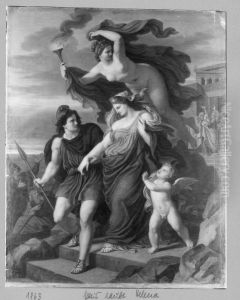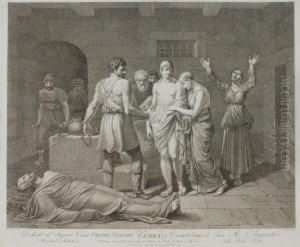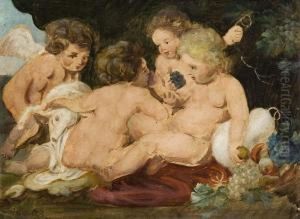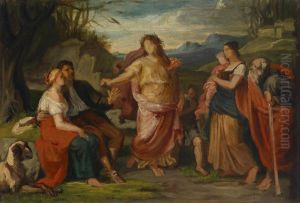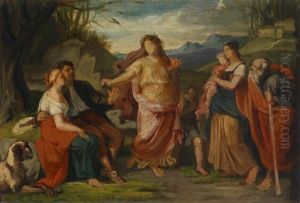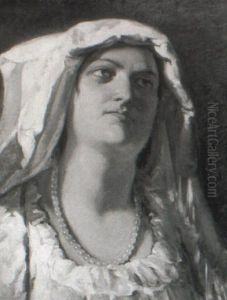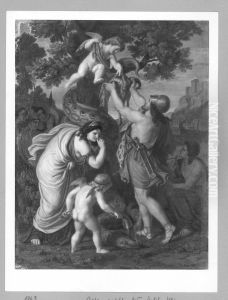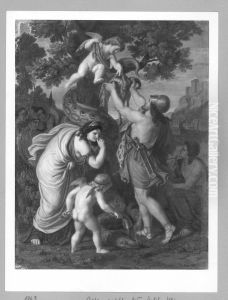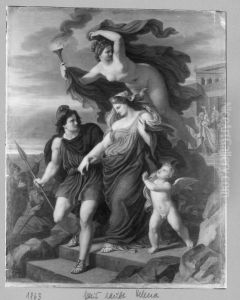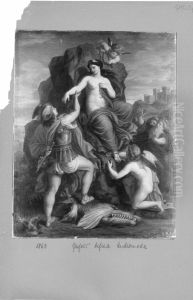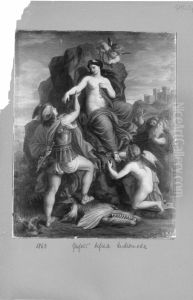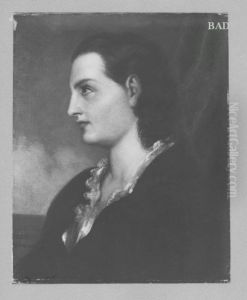Carl Heinrich Rahl Paintings
Carl Heinrich Rahl, also known as Karl Rahl, was an Austrian painter born on August 13, 1779, in Vienna. He was the son of the engraver Carl Heinrich Rahl, who likely provided his first training in the arts. His early education was furthered at the Academy of Fine Arts Vienna, where he studied under the tutelage of Heinrich Füger, a classical painter who had a significant influence on Rahl's development as an artist.
Rahl's early career was marked by his work as a history painter, a genre that focuses on depictions of historical events and figures. His talent garnered him attention, and he was commissioned to create works for various patrons. In 1811, Rahl won the Academy's Gundel Prize, which was a significant achievement and helped to cement his reputation as a skilled painter.
As Rahl's career progressed, he began to gain international exposure. He was influenced by the Neoclassical style, which was prevalent in Europe during his lifetime, and he often sought inspiration from ancient Greek and Roman art. This influence is evident in his use of clear lines, balanced compositions, and a focus on idealized beauty in his work.
In the 1820s, Rahl spent some time in Rome, which was a center for artistic study and a rite of passage for many European artists of the era. His time in Italy further developed his style and broadened his artistic influences. After returning to Vienna, Rahl received significant commissions, including frescoes for the Palais Pallavicini and the Hermes Villa, which showcased his mastery of large-scale compositions and his ability to convey complex narratives through his paintings.
Rahl's works were often grand and dramatic, reflecting the Romantic sensibilities of his time. He painted numerous altarpieces, mythological scenes, and portraits, each imbued with a sense of dynamism and emotional intensity. Despite his success, Rahl struggled with financial difficulties throughout his life, which were exacerbated by his generous support of his students.
Carl Heinrich Rahl passed away on July 24, 1843, in Vienna. He left behind a legacy as one of the leading Austrian painters of his generation, influencing subsequent artists and contributing to the development of the Romantic movement in the Austrian art scene. His works are still admired today for their technical skill and their embodiment of the aesthetic ideals of his time.
